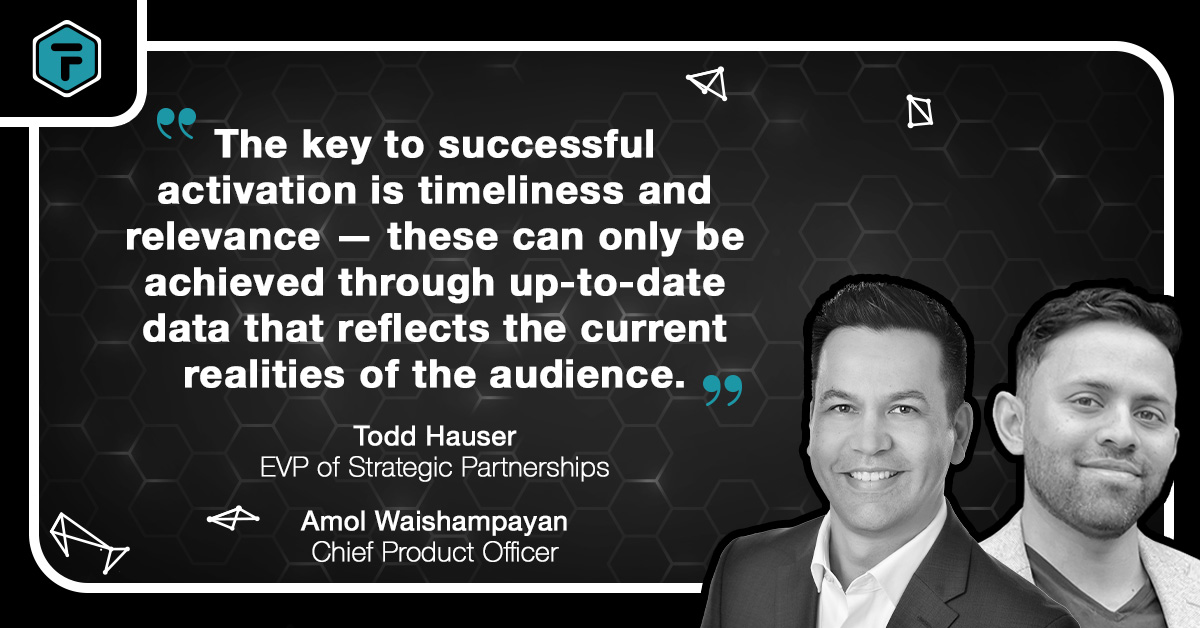
Businesses are missing a key factor that mutates their in-market audience: perishability.
Your audience data is dying. Every second that ticks by is another step it takes toward obsolescence. Thankfully, new tech is solving for data decay and perishability — it’s driving unprecedented results, especially when it comes to audiences.
As people interact with content and explore websites, their interests and needs can shift quickly, rendering the data you gathered less relevant ... or even obsolete. Evolved marketers are continually questioning the traditional view of audience data — they’re figuring out how to seize on its highest value during an interaction instead of making lost value equations as it moves toward activation. It’s time we investigate whether your audiences are dying on the vine without you knowing it.
Key takeaways:
- Audience data begins to degrade the moment it is captured, losing relevance quickly due to the dynamic nature of consumer behavior.
- Traditional methods of capturing audience data fail to account for the ongoing evolution of consumer preferences, leading to marketing strategies based on outdated information.
- Effective audience management requires real-time data collection and activation strategies that reflect the current interests of consumers to prevent the depreciation of data value.
The Inevitable Decay of Audience Data
Let’s be frank. Audience data, often viewed as the lifeblood of targeted marketing, begins to degrade the moment it’s captured. This decay is unavoidable, stemming from the dynamic nature of consumer behaviors and the rapid speed of retail. Unlike non-perishable assets, information on your audience has a short half-life; its relevance diminishes rapidly as time passes and each user continues their journey.
Third-Party Data Isn’t Even on the Board
We’ll get this one out of the way right up front: Third-party data is well past its due date by the time you acquire it. Processing signals from browsers, IP addresses, and fingerprinted devices not only obscures the full view of your audience’s motivations, but it also comes in with far too much delay. The pace of retail is too fast for third-party data to be effective anyway. First-party data is collected at the moment of confirmed engagement with your brand, and that’s what we’ll be discussing in this article.
A Photo of Your Audience Can’t Last
"Capturing” audience data is like taking a photo of your audience. When marketers capture and segment audience data, they often do so based on a specific moment or a set of interactions within a fixed timeframe. However, what this process fails to capture is the ongoing evolution of consumer behavior and preferences.
The photo is not a true indicator of an audience's current state, yet businesses activate marketing based on what’s inside it. This discrepancy arises because most data on audience behavior is historical and static — once you've captured and stored the data, it no longer evolves with the audience's path. This lag creates a gap between what the data suggests and the actual, real-time interests of the audience.
The Three Pillars of Audience Management
Effective audience management rests on three pillars: building the audience, activating the audience, and attributing results from the audience data. Each pillar plays a vital role in ensuring that the value of your audience does not depreciate over time.
1. Building the Audience
Building an audience involves more than just gathering data; it requires a robust understanding of the audience's ongoing activities and preferences. Tools and techniques that gather real-time data are critical in creating a dynamic audience profile that adjusts as consumer behaviors change.
2. Activating the Audience
Once an audience is built, the next challenge is activation. Activation involves deploying marketing strategies that meet the audience where they are most receptive. The key to successful activation is timeliness and relevance — these can only be achieved through up-to-date data that reflects the current realities of the audience.
3. Attributing Results
Attribution struggles when audiences decay. Traditional attribution models that do not account for the depreciation of data accuracy over time may lead businesses to draw incorrect conclusions about what is truly driving results, wasting precious advertising budget.
Addressing the Challenges With fullthrottle.ai's Solutions
fullthrottle.ai™️ confronts the challenge of audience data depreciation head-on by emphasizing the generation and activation of first-party data. Our platform allows your business to not only build in-market audiences, but to constantly funnel live data directly from interactions on your own site. This data is not only more accurate but also fully compliant with privacy regulations, making it a safer, future-proof source of actionable insights for your campaigns.
First-Party Data Utilization
fullthrottle.ai™ enables businesses to generate household-level propensity data for real-time decision-making. We use opt-in first-party data site visitors and listen to myriad signals, then give your business the option to instantly activate on those signals with personalized marketing to meet the moment. This immediacy ensures that marketing strategies remain relevant and effective, drastically reducing the decay in data value.
Data Onboarding With Unprecedented Match Rates
Traditional data onboarding solutions like LiveRamp typically see match rates of 35-40%, leaving a significant gap in audience reach and accuracy. Our platform, however, achieves match rates of up to 90% by working closely with our data partners. This high match rate ensures that your audience is reachable when you activate a targeted marketing campaign.
fullthrottle.ai™️ Adapts at the Speed of Retail
The rapid pace of change in consumer behaviors and the technological landscape calls for a dynamic approach to audience management. Our platform’s suite of tools are powered by patented technology that offers a powerful solution to the challenges of audience data depreciation. By prioritizing real-time data collection, crafting finely tuned audience propensity models, and enabling true attribution down to the dollar, fullthrottle.ai™ ensures that your marketing strategies continuously anticipate and influence consumer behavior.


